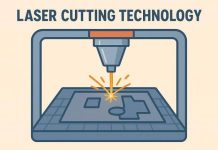For many businesses, procurement is a critical aspect. This is often a strategic process of sourcing, selecting, acquiring, and managing the inventory your business needs to operate. However, this process can also be the source of costly delays, inefficiencies, and missed opportunities for some.
If you find that your business is struggling due to slow procurement, then there are ways to fix it. This post includes the necessary information required to reduce friction, streamline procurement, and unlock real business value.
Reasons for a Slow Procurement Process
Before streamlining the procurement process, you must first identify the reasons why it is happening. There are several reasons why your procurement process may be slowing down your business, as outlined below.
Lack of Structured Processes
Many individuals working in procurement often operate with inconsistent or informal procedures. As they will run without a clearly defined workflow, invoice reconciliation, purchase approvals, vendor selection, and other tasks can become bottlenecks. This means that every request is handled differently, resulting in confusion and delays.
Outdated Technology
If you are using email and spreadsheets to manage procurement, then it will be eating away at your time and productivity. Manual methods often lack automation and integration, both of which are needed to meet the demands of today’s fast-paced business environment. Due to this, approvals can be drawn out, and records can be lost.
Poor Communication
As the procurement process involves multiple stakeholders, including those from finance, legal, operations, and vendors. Errors and misunderstandings are more likely to occur when communication breaks down between departments. This can become even worse when there’s no centralized platform to manage interactions. Procurement will slow down, but poor communication can also lead to compliance issues and financial risk.
How to Fix a Slow Procurement Process
With a better understanding of why your procurement process is slowing down business, you can then move on to addressing the identified problems. Three of the best steps have been explained.
Implement Digital Procurement Systems
One of the first steps in fixing a slow procurement process is to embrace modern technology. Procurement platforms nowadays can automate key tasks, improve collaboration across multiple teams, and track progress in real-time. These platforms can be integrated with a supply chain ERP system and provide a source of truth for procurement activities, streamlining approval workflows.
Map and Standardize Workflows
The next aspect to focus on is the current procurement process. You will need to have a thorough understanding of this, and this can be achieved by mapping out workflows. By doing so, you will be able to identify bottlenecks and inefficiencies, which can then be standardized. Your goal should be to establish a clear and repeatable process that everyone can follow, as this will minimize confusion and enhance efficiency.
Leverage Data Analytics
Finally, data analytics tools should be used to analyze process cycle times, purchasing trends, and supplier performance. As a result, you will be able to pinpoint where delays are arising and make informed decisions. There are other benefits of real-time analytics, including helping to forecast demand, managing risk more effectively, and negotiating better terms with suppliers.
To conclude, a slow procurement process can drag down the entire business, from frustrating employees to increasing costs. You should make an effort to address the root causes of this problem and adopt a more effective approach, particularly if you want to gain a competitive advantage.






































